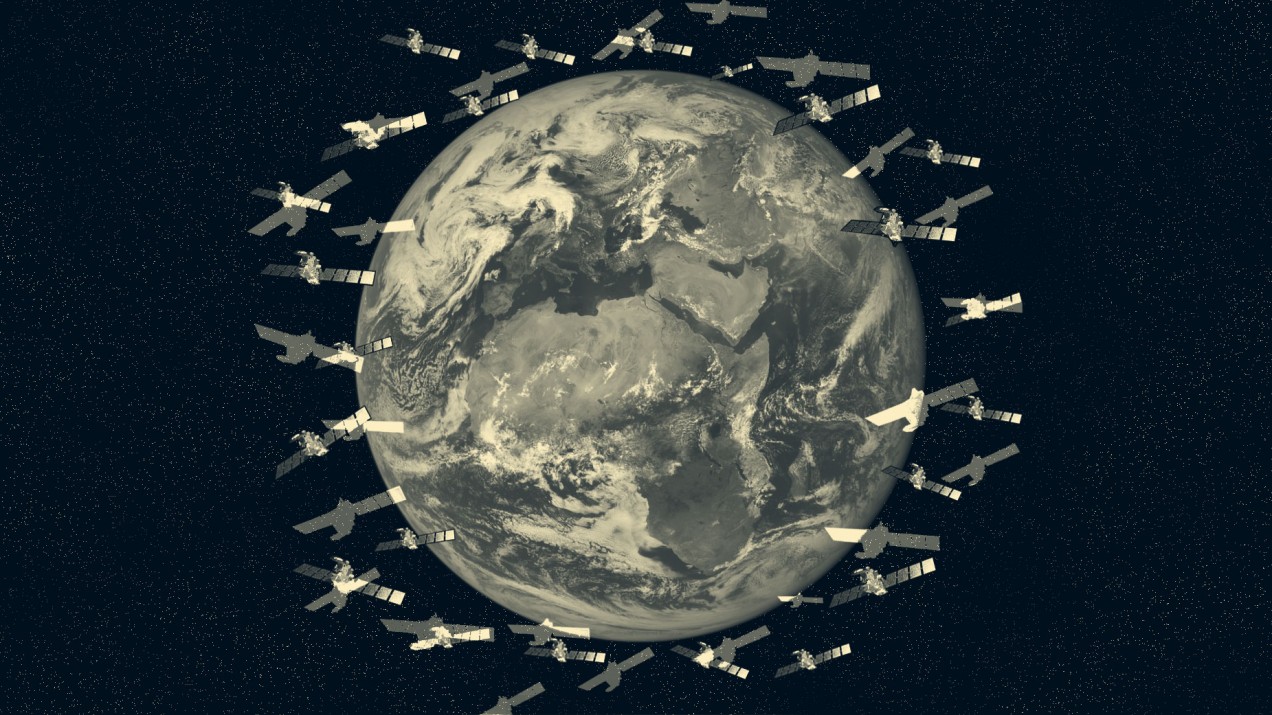

Space / SpaceX News
Satellite crashes will plague us unless we manage space traffic better
The recent near-miss between SpaceX and ESA highlights the weaknesses in our current system for keeping Earth’s orbit safe.

- As we launch more satellites into orbit, we’ll need a better system for managing our space traffic.
- There are some technologies that could play a significant role.
- The most powerful solution will be a global framework that keeps traffic in Earth’s orbit running smoothly.
There were plenty of unusual things about this week’s satellite kerfuffle between the European Space Agency and SpaceX—the public statement released by ESA, initial reports that SpaceX declined to move its Starlink satellite despite being warned about a risk of collision, and SpaceX’s claim it didn’t respond because a glitch caused it to miss the warning, to name a few. But perhaps the least surprising aspect was the prospect that two objects in orbit could have crashed into one another.
Orbital congestion is rapidly building. Two dozen companies alone have proposed launching well over 20,000 satellites in the next 10 years. For context, fewer than 8,100 payloads have been placed in Earth’s orbit since the space age began. Incidents like the ESA-SpaceX near-miss make it clear our current space management system is untenable.
That’s not a huge surprise, considering there is no real standard for managing space traffic around the world. “I would describe it as nascent to nonexistent,” says Brian Weeden, the director of program planning at the Secure World Foundation. Most satellite operators, including some abroad, simply rely on the US Air Force’s forecast of potential “conjunctions” between active objects in orbit. The Air Force—which initially aimed just to track missiles in space, not to become the world’s space traffic cop—tracks objects using radar and delivers alerts when the probability of a collision is higher than 1 in 10,000 (on Monday, that probability rose to around 1 in 1,000).
“Each satellite operator is basically on their own to assess the risk [of collision] and determine what to do about it,” says Roger Thompson, a senior engineering specialist at the nonprofit Aerospace Corporation. “And each one has their own risk posture. Sometimes those operators will perform a collision avoidance maneuver. Sometimes they’ll just ride it out, if they still believe the risk is low enough.”
There are reasons enough why this has become the norm. For one thing, changing the trajectory of an object speeding around the planet at tens of thousands of miles per hour isn’t easy, especially when it’s relying on a tiny thruster for maneuvering. And oftentimes, a concerning level of risk will drop by one or two orders of magnitude as more data arrives. In the vast majority of cases, maneuvers aren’t necessary.
But mega-constellations like Starlink, which will comprise thousands of satellites when fully operational, complicate our space traffic forecasts and collision avoidance strategies. “We can’t just continue to do business as usual,” Thompson says. “You don’t want to step out of the way of an oncoming car and step into the way of an oncoming bus, so to speak.”
Technology can play a pivotal role. “The US military has struggled to upgrade its computer systems to improve the accuracy of the warnings and be able to accept different kinds of data,” says Weeden. “Shifting from ’60s-era military hardware to modern hardware will help a lot.” We can also deploy radar systems in more parts of the world—some can even be operated by private companies—to track more objects at once. Many satellite operators (including SpaceX) are trying to pursue autonomous systems that can automatically move satellites to avoid collisions when an alert goes out, though they are still unproven; and like self-driving cars, these systems might be useful only if they are communicating with one another.
Everyone’s a satellite cop
But the bigger picture of space traffic management also needs a rethink, argue Thompson and his Aerospace Corporation colleague Ted Muelhaupt, the lead author of a recent paper outlining specific recommendations. Satellite operators almost always know their own satellites’ positions, but at the moment they don’t share that data with each other. Each must follow its own country’s laws on what altitude satellites are allowed to operate at, where they can travel, who should take what action should a threat of collision arise, how to dispose of dead satellites, and so forth—but there is no way to resolve problems if those regulations conflict with another country’s. An intergovernmental space traffic body could be very useful, but how would such a body actually police traffic and back up its regulations with punitive measures? We can’t just hand out tickets for anyone who violates the rules. There’d be no bite behind the bark.
So if the stick won’t work, you have to go with the carrot. “If a central agency could provide a service that lets people get mutual benefits, that will get people to join on their own,” Muelhaupt says. “It’s like a standard—if you get enough people to adopt the standard, the standard becomes enforceable on its own through the market. Satellite operators will voluntarily comply.”
Even if they resent being told what to do, operators will get on board because they all agree on one thing: satellite collisions are bad for business, and bad for space. Ultimately this means that protecting one’s own assets means protecting others’ as well. Conflicts are sure to emerge when we start debating which countries and which businesses ought to move out of the way for others. But those spats are far preferable to the alternative, in which Earth’s orbit becomes so littered with debris from shattered orbiters that no one can safely use it.